This is the last in a series of blog posts by students of the V&A/RCA History of Design MA programme, composed to accompany the ‘Building the Royal Albert Hall’ display, which is now in its last few weeks. It can be see at the V&A in Room 127 (the entrance to the Architecture Gallery) until 7 January 2018.
Here second-year student Karen Morton discusses the hammercloth used to decorate the Royal Box at the Hall.
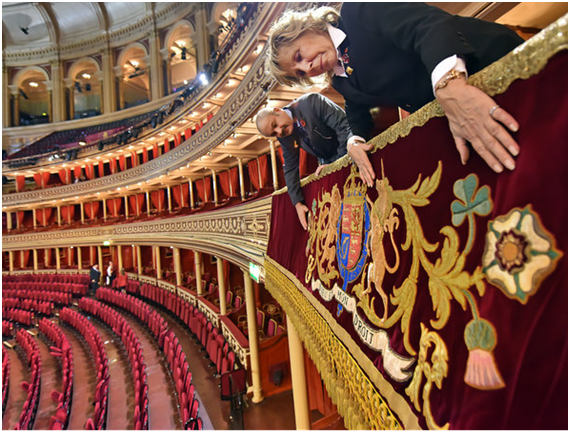
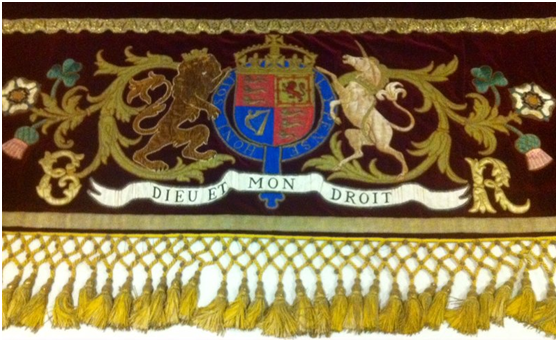
Textiles are found throughout the Royal Albert Hall in a variety of applications and techniques, functional and decorative. The hammercloth is a unique textile, which embodies the cultural and educational links between the institutions in South Kensington’s ‘Albertopolis’. Hung from the Royal Box whenever the reigning monarch is in attendance at the Royal Albert Hall, it is a heavily embroidered velvet curtain bearing the Royal Coat of Arms and the initials of the reigning monarch of Great Britain and the Commonwealth.
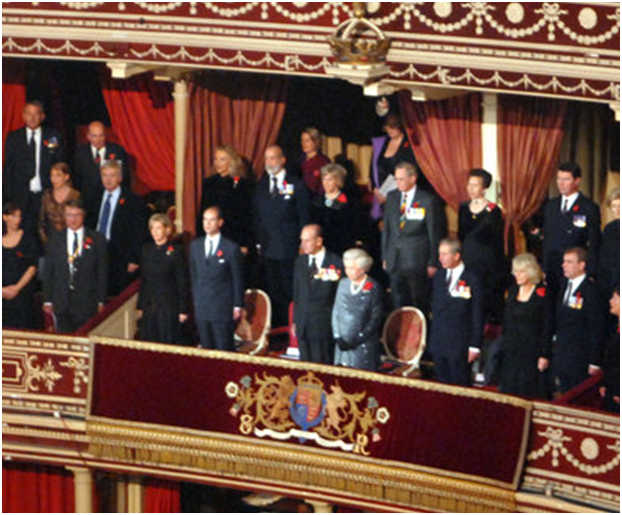
‘Hammercloth’ is a word with vague origins, but usually meant the heavily embroidered cloth that hung over a coachman’s seat on horse drawn coaches, often embroidered with a coat of arms. This hammercloth was made for the Royal Albert Hall by the Royal School of Needlework (RSN) in 1878; this date is embroidered on the lower left of its hem. At that time, the RSN was situated on Exhibition Road, very close to the Hall. The RSN began as the School of Art Needlework in 1872 founded by Lady Victoria Welby and was situated in a small room above a bonnet shop in Sloane Street, London, initially employing 20 ladies. The founding of the school resonated with the philanthropic ethos seen in other areas of education and industry in Victorian and Edwardian Britain with the founding principles of the RSN being two-fold: to revive a beautiful art which had fallen into disuse and, through its revival, to provide employment for educated women who might otherwise find themselves compelled to live in poverty. At its peak, the RSN employed around 150 workers.
This sense of social, educational and cultural responsibility is found in further projects associated with the Royal Albert Hall, such as the mosaic made by students of the South Kensington Museum (later the Victoria and Albert Museum), which provided opportunities for education and training in arts and sciences whilst promoting the principles of good taste in design and a return to skilled craftsmanship. Traditional skills and an appreciation of well-designed products were felt by Prince Albert and Henry Cole to have been lost and an emphasis on their importance was intentionally embodied in the spirit of ‘Albertopolis’, the area of South Kensington where the Royal Albert Hall and the South Kensington Museum were built. From the outset there were royal links to the RSN as the first President was Queen Victoria’s third daughter, Princess Christian of Schleswig-Holstein, known to the RSN as Princess Helena. In 1903 George, Prince of Wales (later King George V) opened a new RSN purpose-built centre on Exhibition Road, close to the V&A Museum, thanks to the sterling fundraising efforts of Princess Helena and others.[1]
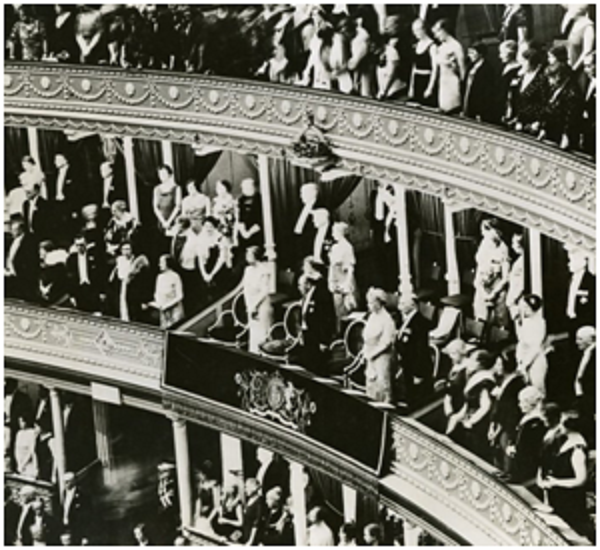
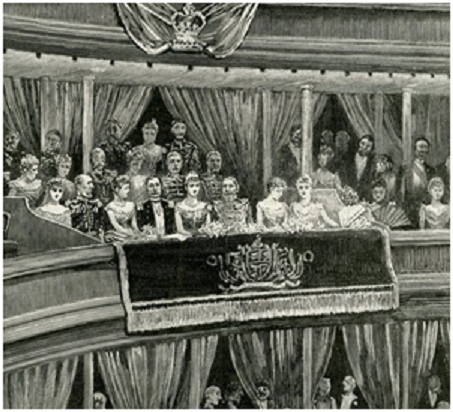
On the accession of a new monarch the hammercloth is sent to the Royal School of Needlework, now based at Hampton Court, for the Royal Cypher to be amended. A note in the Hall’s Reception Register for 12 April 1911 states that the hammercloth was taken from the King’s Box by an individual named Banham to the School of Arts Needlework to have the ‘E’ ( for Edward VII) taken out and replaced by the letter ‘G’ (for GeorgeV). The hammercloth was lent to the Royal School of Needlework in 1997 for their 125th anniversary, and there it was seen by members of the Royal Family who commented that it was the first time they had actually been able to look at it properly. The cloth has been repaired several times since it was made: in 1962, 1989, and 1994 and lastly in 1999, when the embroidery was transferred onto new velvet and a velcro box fastening was attached. It is stored carefully rolled around a large purpose built tube, which rests in a metal trunk. The Archive team take every care to monitor the environment in which it is stored. As they say: ‘Our worst fear would be finding moth holes in the tasty velvet!’[2]
[1] www.royal-needlework.org.uk
[2] http://www.royalalberthall.com/about-the-hall/news/2013/november/hanging-the-hammercloth-an-archivists-duty/
With thanks to Elizabeth Harper Archive Manager and her colleagues at The Royal Albert Hall Archives
To see what else V&A/RCA History of Design students and alumni have been up to, check our pages on the V&A and RCA websites and take a look at Un-Making Things, a student-run online platform for all things design history and material culture.
Further Reading:


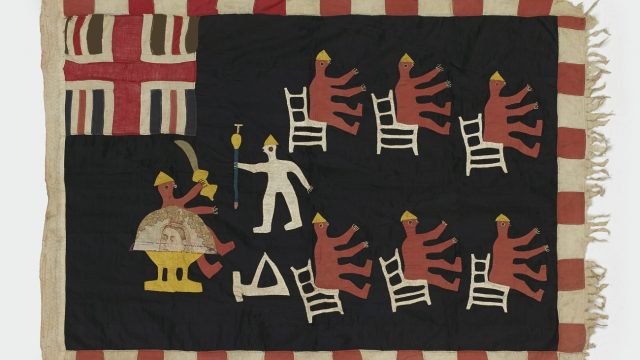
Thanks for this..